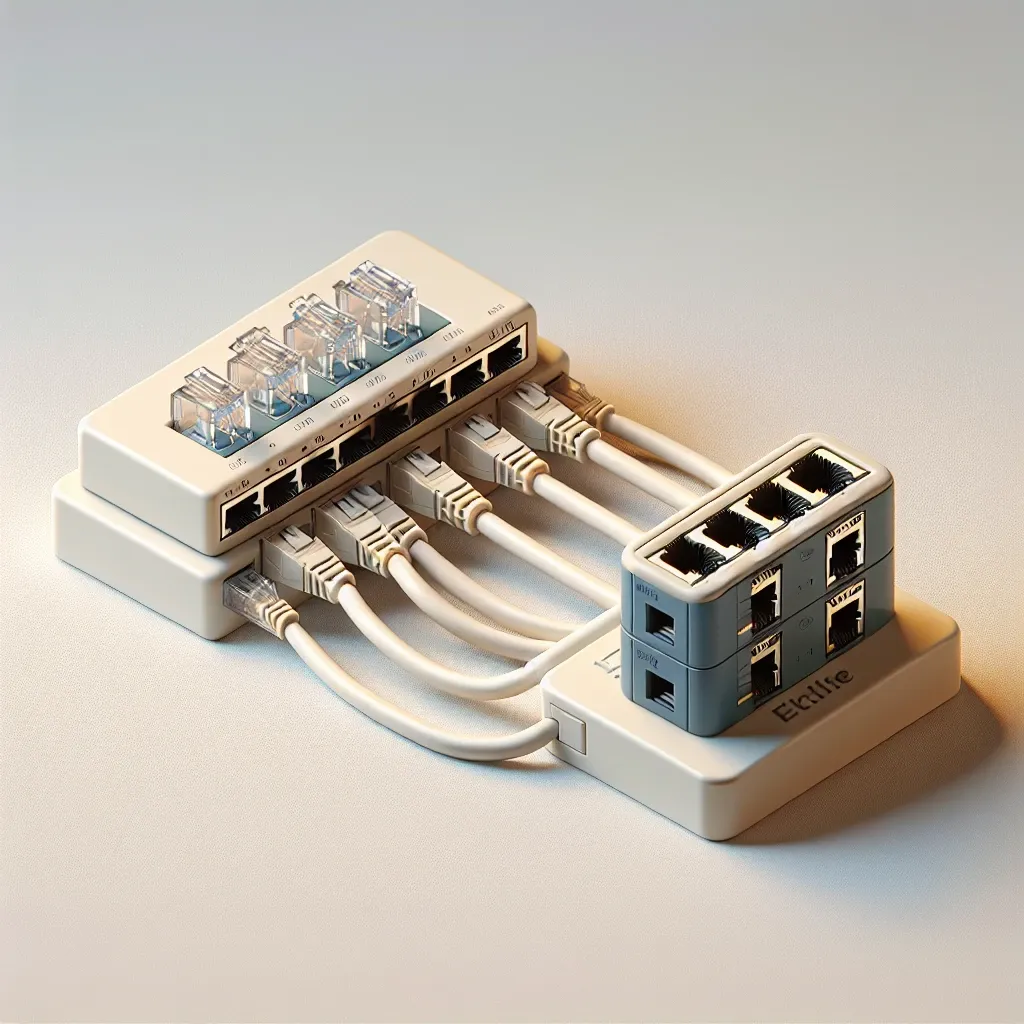Understanding Ethernet Splitters and Ethernet Switches
When setting up a home or office network, understanding the tools and devices available can be crucial. Two common devices often discussed in this context are Ethernet splitters and Ethernet switches. While they might seem similar at first glance, they serve different purposes and operate in distinct ways. This article will delve into the key differences between Ethernet splitters and Ethernet switches, ensuring you make an informed decision when configuring your network.
Definitions and Basic Functions
What is an Ethernet Splitter?
An Ethernet splitter is a simple and inexpensive device that takes a single Ethernet cable and divides it into two connections. This allows you to run two devices off one Ethernet cable. However, it’s important to note that Ethernet splitters do not actually create additional bandwidth; they simply split the existing bandwidth between the two connections.
What is an Ethernet Switch?
An Ethernet switch is a more complex device that connects multiple Ethernet cables from various devices, facilitating communication between them. Switches can manage data traffic efficiently, ensuring each device receives the full bandwidth of the connection.
| Feature | Ethernet Splitter | Ethernet Switch |
|---|---|---|
| Basic Function | Divides a single Ethernet cable into two connections | Connects multiple devices, managing and directing data traffic |
| Bandwidth | Splits existing bandwidth | Provides full bandwidth to each connected device |
| Complexity | Simple | More complex |
| Cost | Low | Higher |
| Setup | Plug and play | Requires configuration |
Advantages and Disadvantages
Ethernet Splitter: Pros and Cons
- Pros:
- Inexpensive solution
- Easy to use
- No additional power needed
- Cons:
- Limited to two devices
- Splits the bandwidth, reducing speed
- Not suitable for high-demand applications
Ethernet Switch: Pros and Cons
- Pros:
- Supports multiple devices
- Full bandwidth for each device
- Advanced data management and efficiency
- Cons:
- Higher cost
- Requires power connection
- Initial setup might be more complicated
Use Cases
When to Use an Ethernet Splitter
Ethernet splitters are ideal in situations where you need a quick, inexpensive solution to connect two devices to a single Ethernet cable. This might be sufficient for basic tasks like internet browsing or connecting a printer and a computer in a home office.
When to Use an Ethernet Switch
Ethernet switches are better suited for environments where multiple devices need to be connected simultaneously and maintain high-speed internet access. This includes businesses, gaming setups, and homes with multiple internet-capable devices.
Technical Specifications
To choose the right device for your setup, understanding technical specifications is crucial.
Ethernet Splitter Specifications
- Operating Frequency: Typically 10/100 Mbps
- Cable Required: Cat5e or Cat6
- Connector Type: RJ45
- Power: Not required
Ethernet Switch Specifications
- Operating Frequency: 10/100/1000 Mbps
- Port Count: Typically varies from 5 to 48 ports
- Cable Required: Cat5e, Cat6, or higher
- Connector Type: RJ45
- Power: Required
- Management Features: May include VLANs, Quality of Service (QoS)
Conclusion
Choosing between an Ethernet splitter and an Ethernet switch boils down to understanding your specific networking needs. If you need a simple and cost-effective solution for connecting two devices with limited bandwidth requirements, an Ethernet splitter might be sufficient. On the other hand, if you require a robust solution capable of handling multiple devices with dedicated bandwidth, an Ethernet switch is the way to go. Investing in the right device will ensure a seamless and efficient internet experience, tailored to your specific needs.

